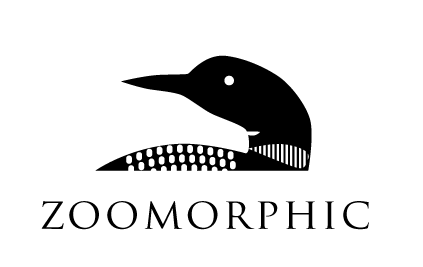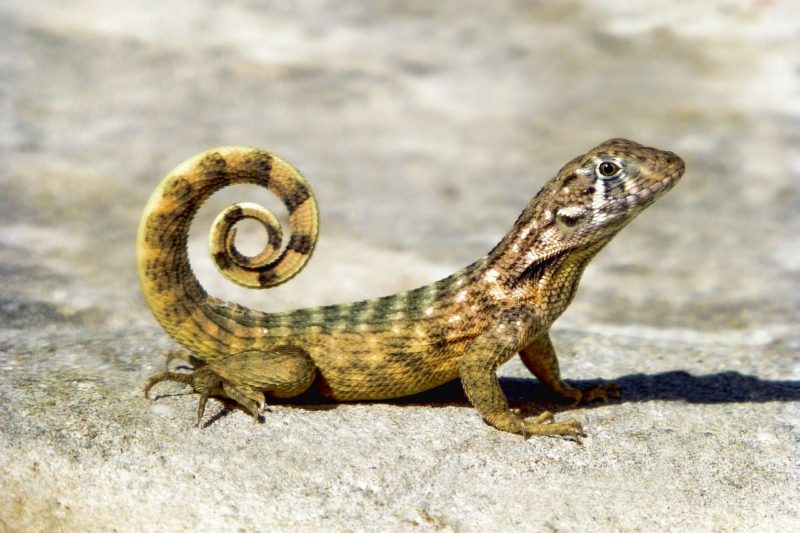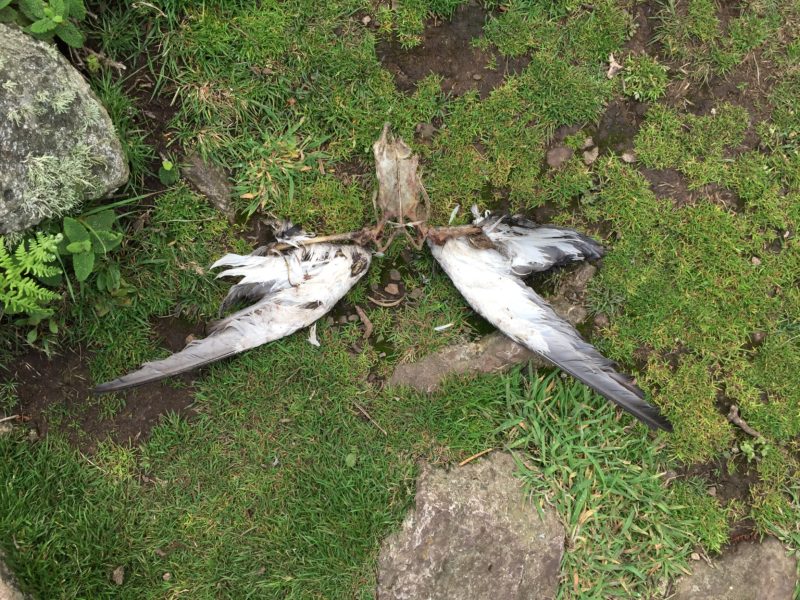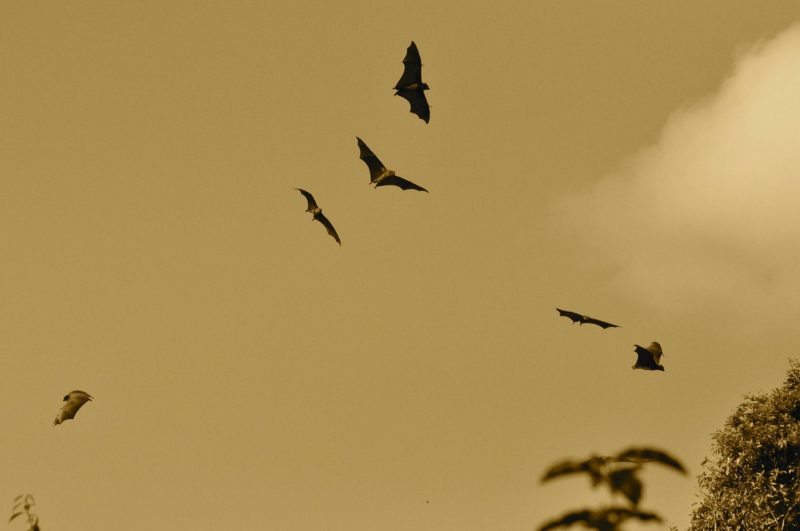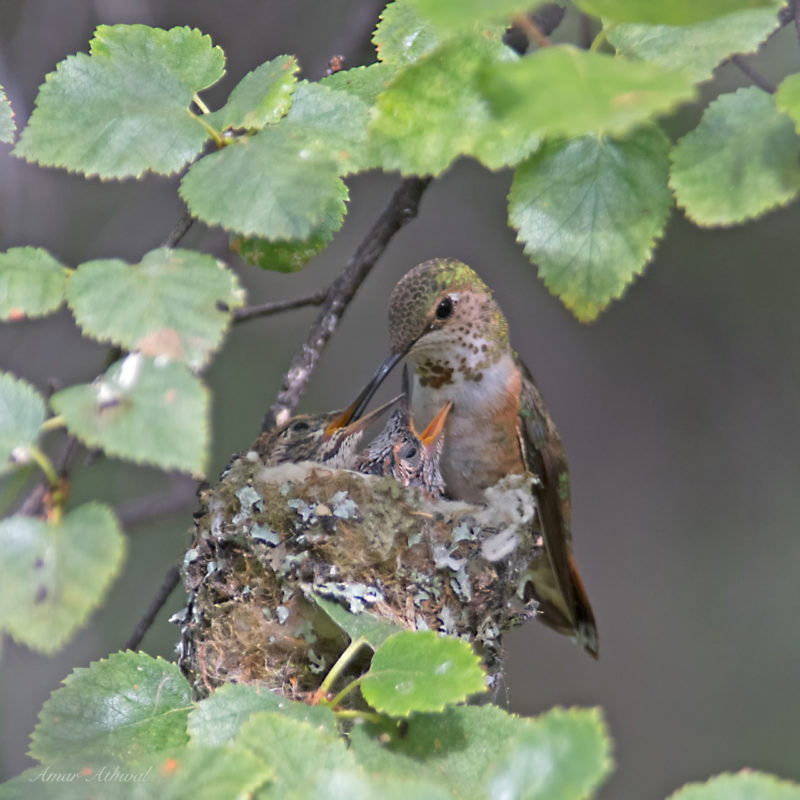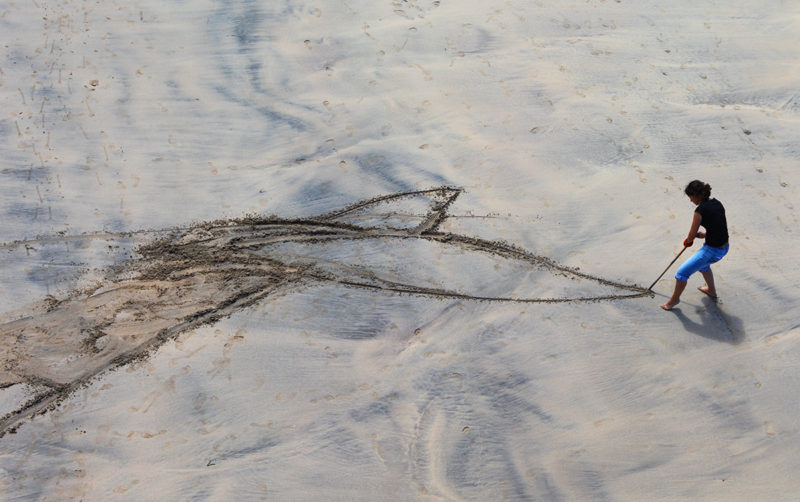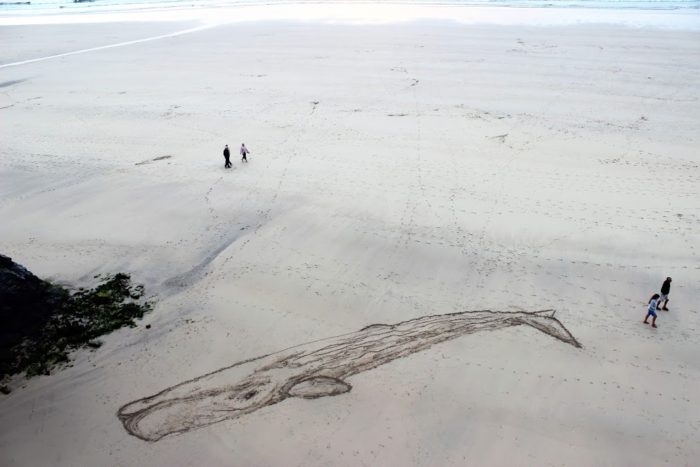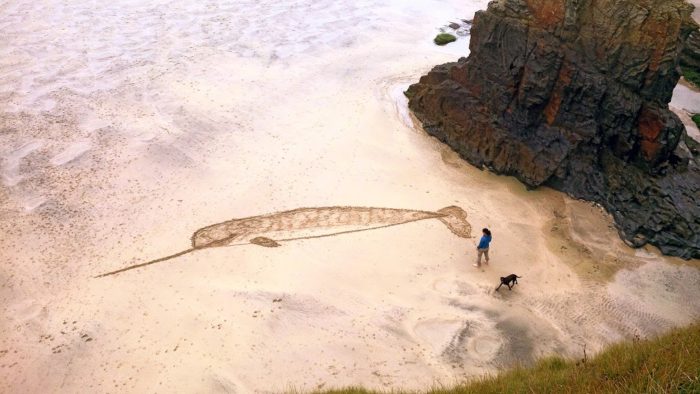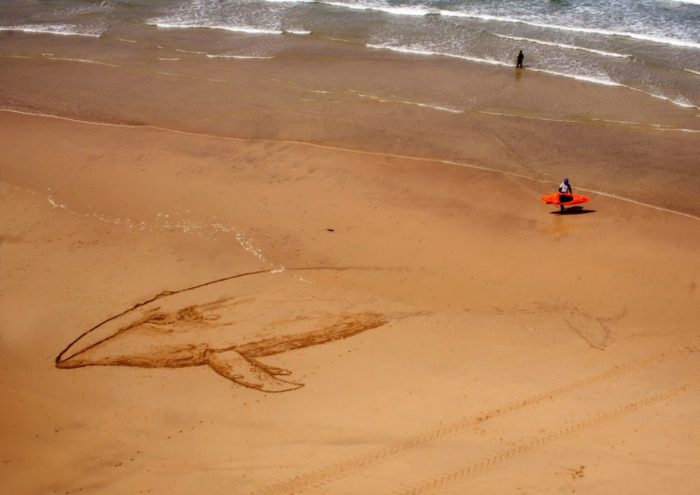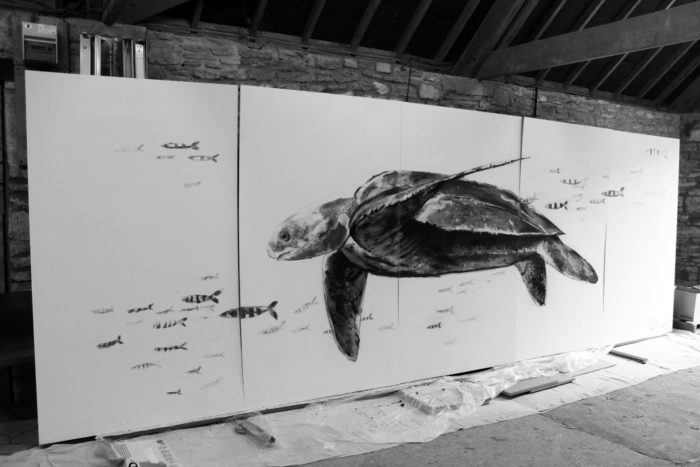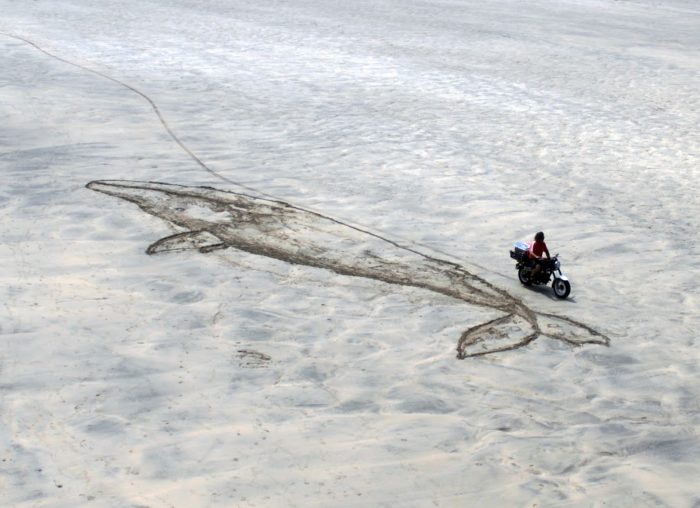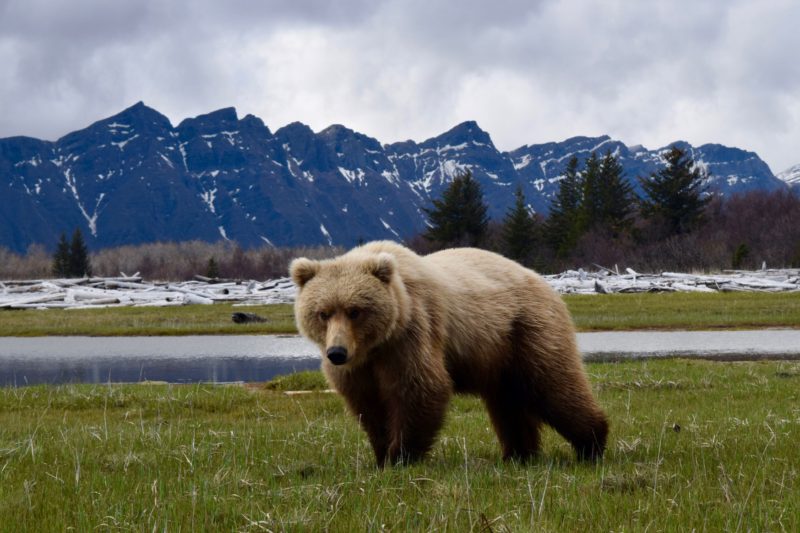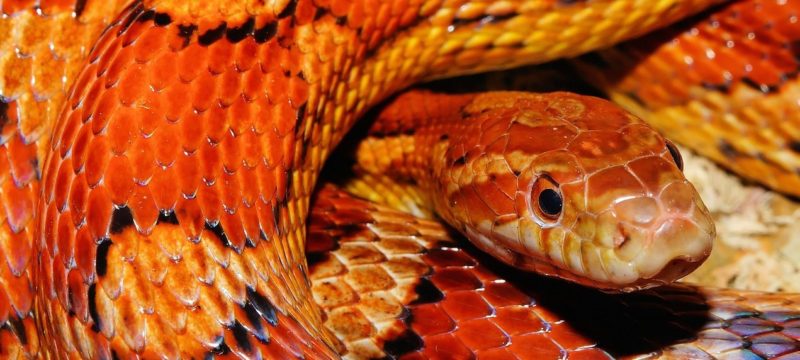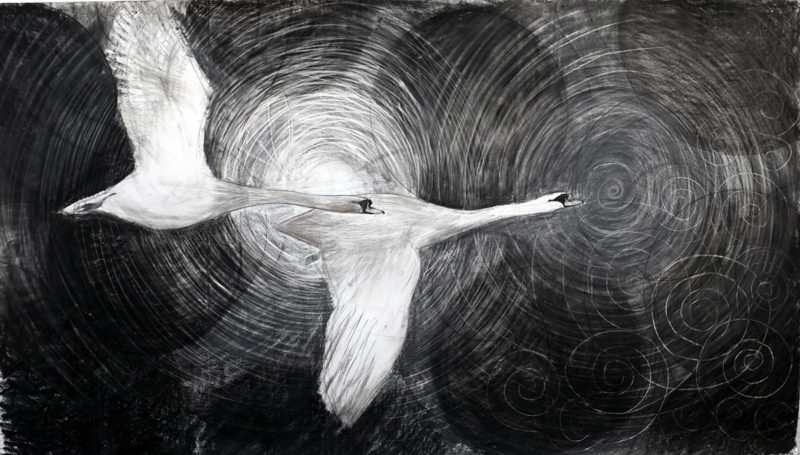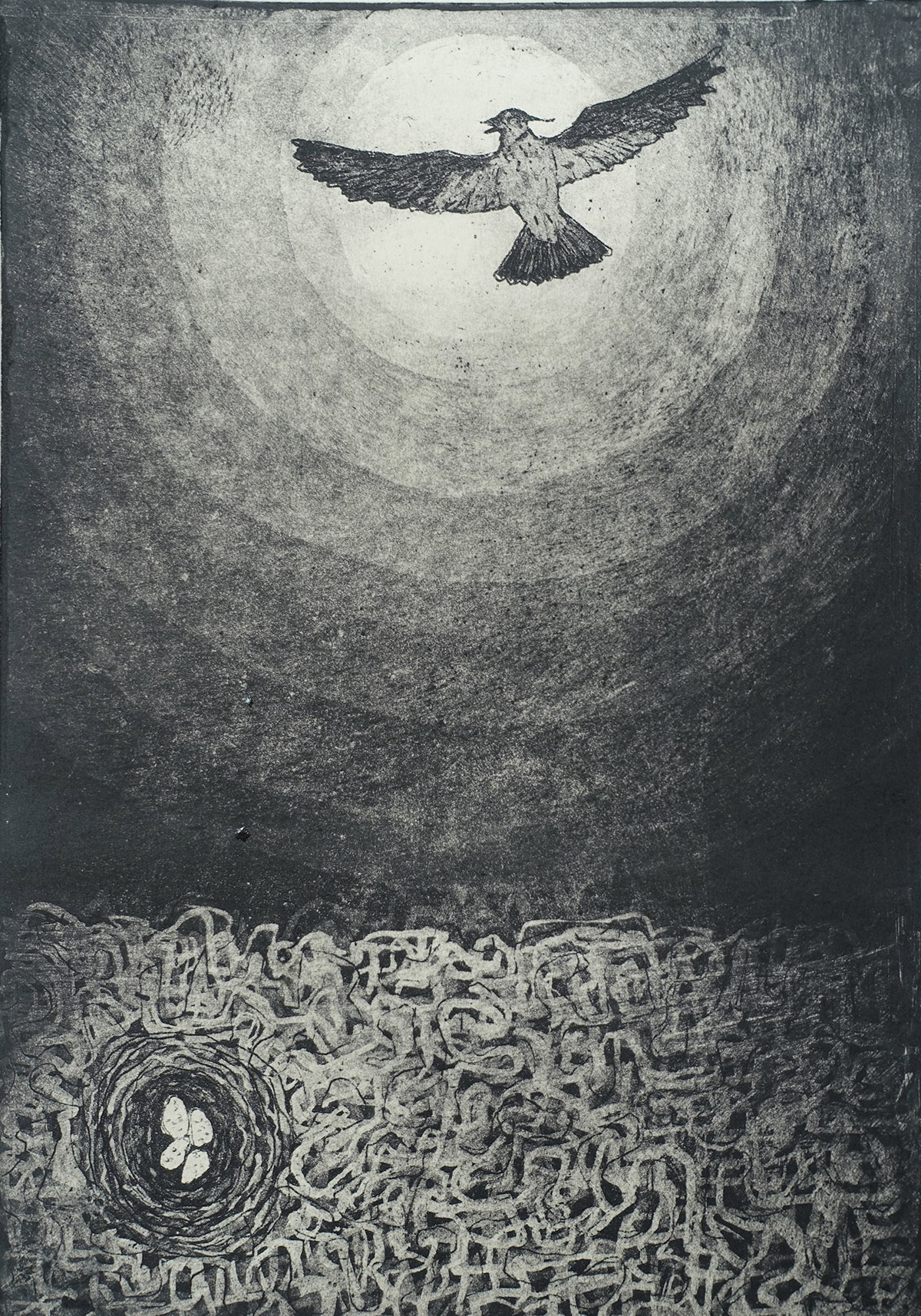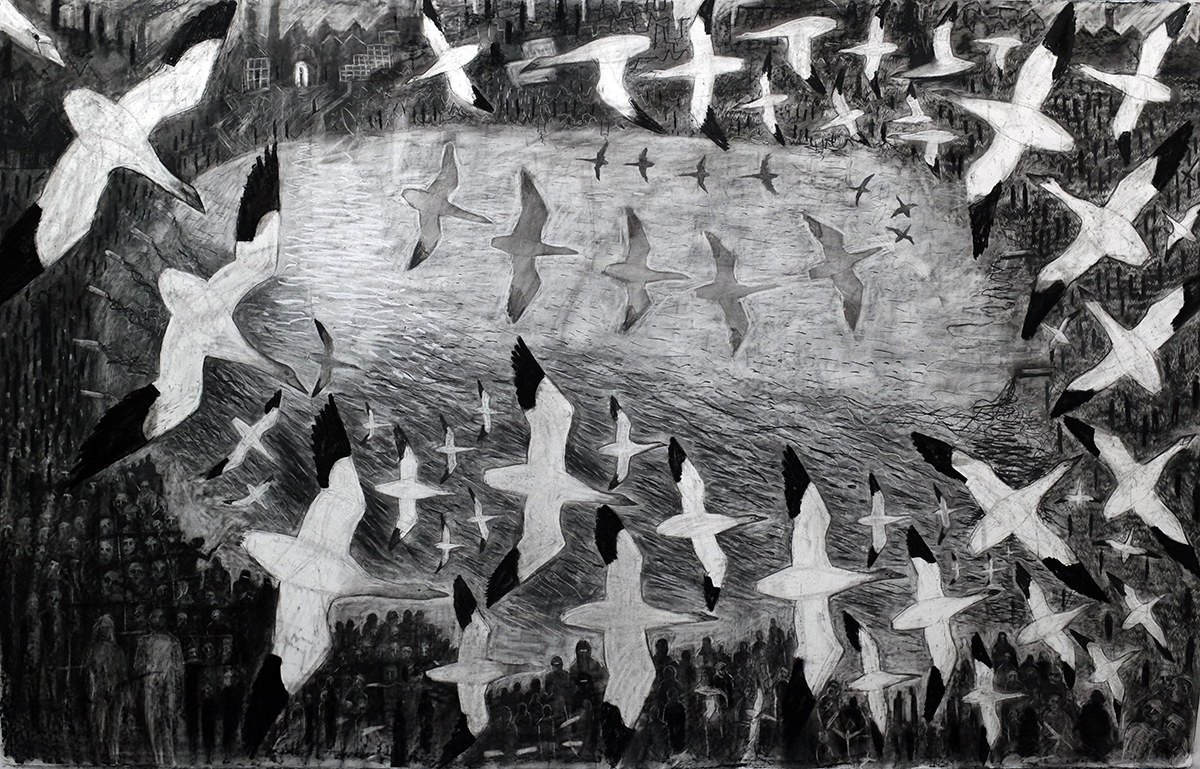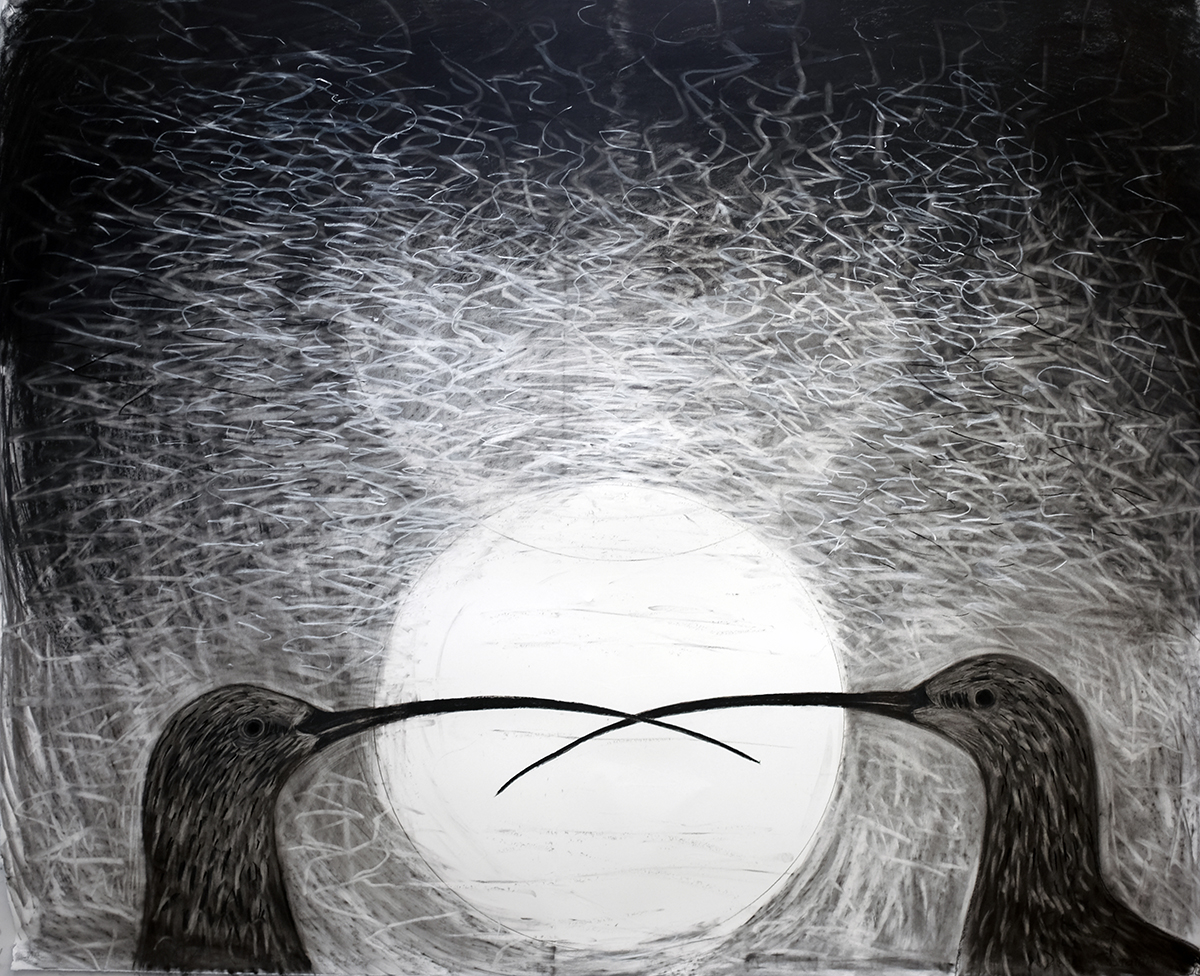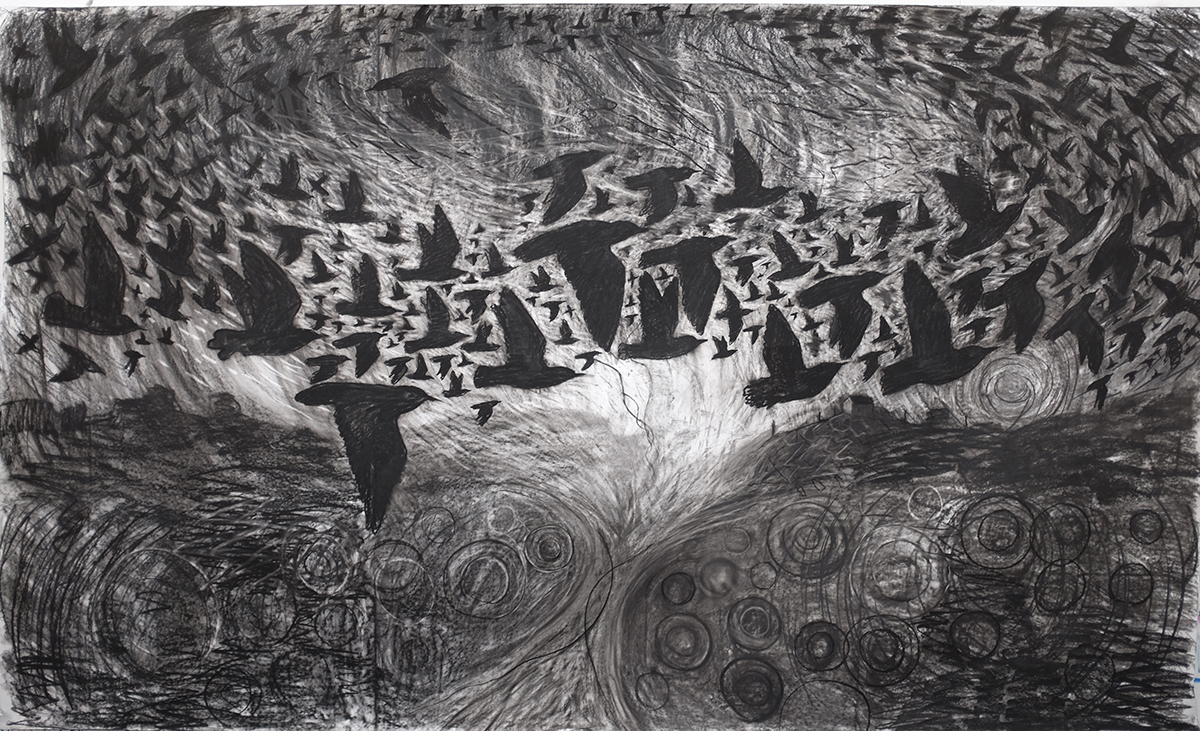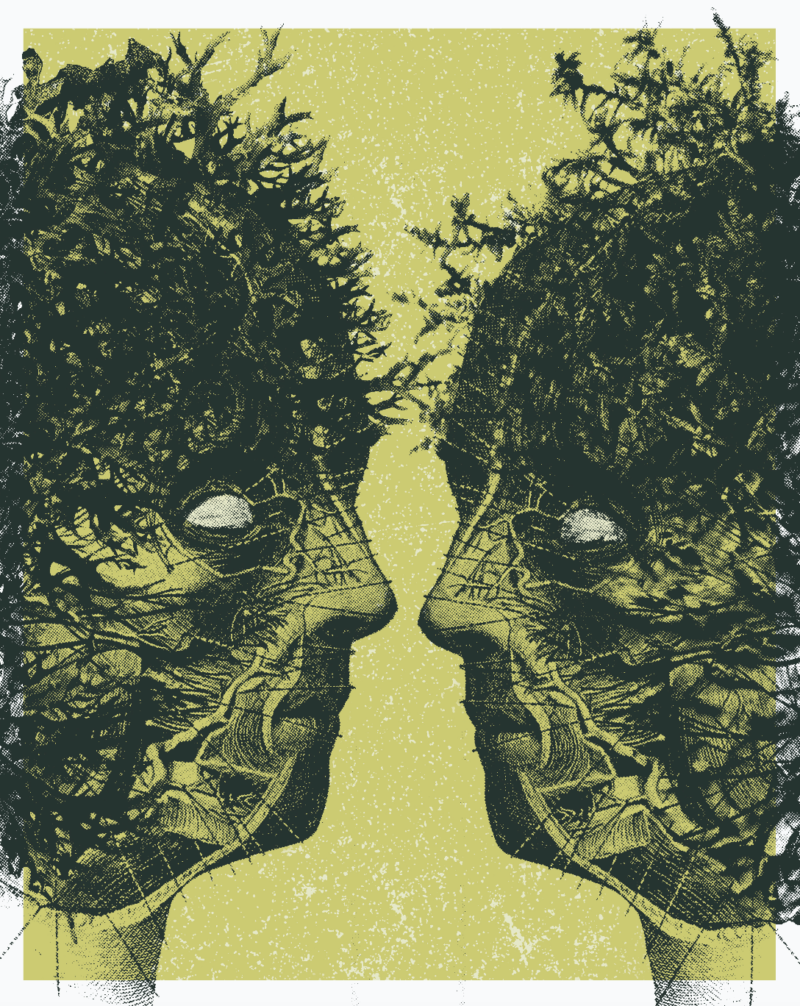by Jennifer Tarnacki
As soon as I moved into a cabin in Alaska I started dreaming about bears. They appeared in my dreams all the time, not nightly, but close. It was like my spirit was trying to connect to the spirit of Bear, searching around in the dark, groping in the crevices and recesses of my subconscious for memories or perceptions that I already had. With every dream similar images flickered across my inner landscape - of predator, monster, aggressor, killer- but none of them felt quite right. My impressions, assumptions, and perceptions about bear, they all felt wrong. I felt anxiety in the Alaskan woods, but it didn’t feel quite right to think of them only as big predators. I couldn’t put my finger on it, this attraction coupled with fear, which are actually two sides of the same coin: fear hiding love. That beautiful ache you feel when looking at a deadly creature, your fatality wrapped up in their being. An intimate and thrilling connection.
Moments in the woods were tense. I feigned calm but really on hikes or trips to the outhouse I feared, jumping at the slightest crack of a twig. I consumed bear facts like I was preparing for an exam. I knew the myriad given names for bear: Lightfoot, silvertip, fur man, honey paw, grandfather on the hill, wise man, winter-sleeper. I read folk stories from every Northern culture. Humans throughout every culture have always had a connection to bear; we see them in patterns in the sky, creating constellations out of them. My first few months I was convinced I’d see one any minute, a mythic silhouette lumbering in a dark wood. I was obsessed.
Nonetheless my hyper-vigilance seemed for naught, all I had spotted so far when I heard sounds that made the hair on the back of my neck stand up ended up being from squirrels rattling around in the roof. I hadn’t encountered this being I thought so much about. So when spring rolled around and I saw a posting on Craigslist for the chance to work for a bear viewing company that came with the perk of free bear viewing trips, I jumped on it.
The first trip I joined was to Hallo Bay, Katmai National Park. A brown bear sanctuary. Hallo is a small bay in the gulf of Alaska separated from habitable land by volcanoes and ice-capped peaks. Thousands of brown bears thrive there. Here exists the strange fact of biological habituation: due to the plentiful food and lack of negative contact with humans, Katmai bears have become habituated to human presence, but only if it stays predictable. The bears have not learned to associate humans with food, weapons, or danger. The result - a bizarre non-response to our presence, enabling a thriving bear viewing industry. The pilots skillfully circled Hallo Bay and landed on the beach.
We disembarked the bush plane, geared up and reviewed the rules, of which there were exactly three: stay within arms length of the group, no running, and no fish. We left the relative safety of the beach and stepped out into the valley, following the surefoot guide’s brisk pace directly into the open fields. I fought a fierce urge to sprint back to the plane, feeling crazy for willingly seeking out a brown bear. The hip waders we wore to traverse the mudflats made our movements sluggish and slow, the boots sinking and sticking in the goopy mud with thwaaaacks and thhwwopps. We couldn’t have run if we tried.
The bear trails here are ancient, tamped down by generations of traveling bears criss-crossing the tidal mudflats and fields in each others’ footsteps. Mamas teach new cubs to walk the same pathways that generations before them have walked; a cultural knowledge. They know they’re home. This has been their ancestral dwelling ground for a long time. Take a bear out of
her home and dump her hundreds of miles away and she will traverse rivers and mountains to return within a few days to the exact same place, driven by an impressively powerful homing instinct.
When we first spotted a large bear grazing a few hundred yards away, my heart seemed to catch in my throat. My body went stiff and taut, my breath stilled in my lungs and my heart thumped wildly in my rib cage. This was the fight-or-flight response kicking into high gear. It took everything in me to stay calm with the adrenaline pulsing through me. Phrases like biological habituation and reassurances from the pilots (bush pilots aren’t notoriously sensible folk) only go so far. Try telling your adrenal glands that all is well when a thousand pound grizzly starts curiously meandering your way. Our guide motioned for us to stay quiet, bunch together, and shrink down into a neutral crouching position as the curious bear got a better look at us. I hunkered down in breathless surreality as a big female bear wandered startlingly close, then ambled off, far more interested in other bears in the vicinity than in us.
As my brain caught up with my body’s shock and I convinced myself I was safe, I began to relax. I could trust this. It was May, the beginning of mating season. All throughout the early spring, the bears came down out of their dens up in the hills into the verdant valley below to join dozens of others bears, forming a temporary but cohesive bear society for the summer. They first searched the beach at low tide for clams, then munched lazily on spring greens. Salmon wouldn’t emerge from their watery matrix until July, this is what truly keeps them full and thriving. Until then they gorged on goose tongue grass to fill their bellies.
A juvenile female and male came down from the hills, circling each other slowly, keeping intense focus on each other. The older female pursued curiously and boldly while the younger male inched backwards, maintaining the distance of space between them. When she stopped pursuing, the male started chasing her. A funny, coy mating dance, the female turning around every so often in her retreat if to say, “Are you still following me? Are you committed to this chase, big boy?” A few hours later, evidently over their apprehension, we saw them playfully batting each other around, rolling around on top of one another; two young bears playing make believe at being mating adults.
The bears seemed to dance around each other, keeping space between them with a calculating precision. Specific body language cues signaled to each other an understanding of their place in bear society. At least thirty different facial and body language cues communicate a plethora of information to each other; of aggression, submission, tolerance, suspicion, interest in mating, territorial anger. The young ones must learn their place in the hierarchy or risk a fight. At one point, two big but young teenage males came crashing and tumbling over each other in the dense spruce, startling our guide who instinctively put a hand to the flare dangling from his pocket, but the bears were only play-fighting, looking exactly like unruly puppies. Later we saw them napping on their day beds, curled up peacefully on their razor sharp claws the size of dinner plates.
There is an eerie humanness to their gait. I could see how northern dwelling proto-Europeans could have thought that bears were their distant ancestors, as if stripping their garment of fur would reveal a human underneath. Like us, they are foraging omnivores, like us, they stand upright, eyes facing straight ahead. Like us, they play a coy mating game, and seek privacy to mate or to nurse. They eat herbs to heal their own wounds and illnesses, and put effort into forming comfortable winter dens. Stories abound in indigenous cultures of kinship: of bear cults, maidens mating with bear and giving birth to bear sons, creating elaborate ceremonies around slain bears, wearing their claws as sacred emblems of protection.
The most noticeable sensation was one of space. Bears need large tracts of space: space between each other, space to roam, space to forage and feed, space for privacy and travel. They lumber slowly with a wide girth, rollicking through forest and field. Even with the stress of being surrounded by bears on all sides in an open plain, the pace calmed me. It could have been a scene from prehistoric time. Aided by the sluggishness of the hip waders, I felt as though time had slowed down, like moving through liquid. Yet in this wide open space, in this slow space, a sudden reaction could occur at any moment. The juxtaposition of their nature; first as seemingly peaceful, ambling along munching on grass, only to react with stunning ferocity and speed, is what makes the bears so bewitching, what unnerves us so. This juxtaposition, of slowness coupled with an acute awareness of spontaneous danger, thrusts you into mindfulness, into an intensely alive awareness. Our ancestors evolved in this wild awakening, and I felt a kinship with them too. Slowness and space, aliveness and awareness; this is the authentic pace of wild life.
In this kingdom of brown bears, the most striking realization is that they are living their bear lives, lives as purposeful as any. Here, we are the ones in their territory. Their power, their vigor, seemed to emanate from them, larger than the confines of their form. I felt a strangely fierce and dizzying love of this power. It felt important- a metaphor for wildness.
And yet. And yet. The Katmai bears aren’t quite free. The Fish and Wildlife Service tracks, tags, and tranquilizes them for their research and management purposes. Our arsenal of natural resource management strategies govern what we now refer to as “designated wildernesses”. I felt a dim awareness of the tragedy of this.
I began to wonder…
What did it used to be like? What awareness and knowledge did we used to carry, us fragile humans, to coexist with bear?
Throughout the long history of humans and bears sharing habitat there has been a remarkable coexistence. Our ancestors evolved with this awareness of predators; they knew how to interact, how to respond. When hunting, the bear was more than a trophy prize, it was an initiation right. The slain bear involved a sacred ceremony laden with respect and reverence. A Tligit elder once warned a cocky hunter that he was not respecting Bear enough, and that Bear could sense it. Sure enough, he was right. The seeming descent of the bear into the underworld of their dens and their cyclical reemergence every spring was a metaphor for seasonality and rebirth, giving rise to contemplation of immortality. Bear played an important role in the psyche, because their existence was part of the dangerous beauty of living. I wonder how much that’s changed these days. Many hunters have different equipment now than they did back then, what with many using firearms (held in holsters like those https://gunlawsuits.org/top-picks/best-owb-holsters/ showcases) and the like. I hope the reverence remains, though.
There is a subtle ache in the knowledge that we now have weapons and tranquilizers vastly superior to bear’s prowess, that we’ve diminished their natural habitat to small parcels of manageable land, patrolled by weaponed guards and fake borders. Bears know no borders, respond to no rules. They only want to survive. It makes my heart ache, the fragility of their lives, depending so much on our willingness to coexist versus dominate. How free are they really?
When we landed back in Homer town, all I wanted was to return to Katmai. It felt like the real world. All the asphalt, McDonalds, Safeway and bank buildings looked uglier than ever: a false facade. By visiting a bear sanctuary, I grasped the tragedy of its loss. Somewhere along the way in our history we’ve transformed from being nature, to dominating nature. There in Katmai is one last vestige of wild animal freedom. I would fight to save this, I could die for this.
They say you protect only what you love. Can you love that which you fear? We love our monsters. We evolved side by side. Our freedom is inherently tied up in theirs, of this I am sure.
In the sacred dance between predator and prey is where we emerged, highly attuned to every scent, sound, movement, track and trace of wild animals. Our cognitive acuity was shaped by this awareness and attention. Survival required us to dance on the thin line between predator and prey. We learned from animals the art of the hunt: observing, tracking, stalking, ambush, strategic attack. They were central figures in our mythology, shining with a spiritual animus.
After visiting the land of Bear, I see now that to celebrate animal life, weave them into our myths, live close to them, wear their bones, fur and feathers, use their horns and sinew for tools, eat and be eaten by them, only enriches our humanity. To begin to see them as kin is to crack open your heart, crack open the shell that allows us to look at other creatures as resources to be managed.
Having designated wilderness is like cheating. Supposing ourselves to be the crown of creation, the meaning of it all, meaning evades us.
Today we lack the genuine, authentic experience of coexisting with animals. Maybe that is our loss. Maybe we need to live in an awareness of that sort, maybe it would make us feel more connected to the ecological web of which we are undeniably and irrevocably a part. Maybe
it would enable us to drop the hubris of habitat destruction and feel ourselves, in all our ecological limitations, to be one with the Earth from which we arose. Maybe we cannot reach the full expression of being human if we do not live in wildness.
I’d take the risk for the freedom inherent in that reality. I’d willingly take on the burden of having to know and understand other creatures, not only dominate and control them.
I stopped dreaming about bears after visiting Katmai. My subconscious confusion was alleviated and replaced with an acceptance of risk. There is a creative power inherent in risk; a challenge to our very capacity for survival, assuming that our survival is intricately related to the survival of other creatures.
A world where bears can freely roam their ancestral lands is the world I want to live in, because I can sense deeply, though only dimly articulate, that in this, and only in this way, can we be fully human.
Jennifer Tarnacki is a freelance writer living in Homer, Alaska.
Image by Jennifer Tarnacki.
